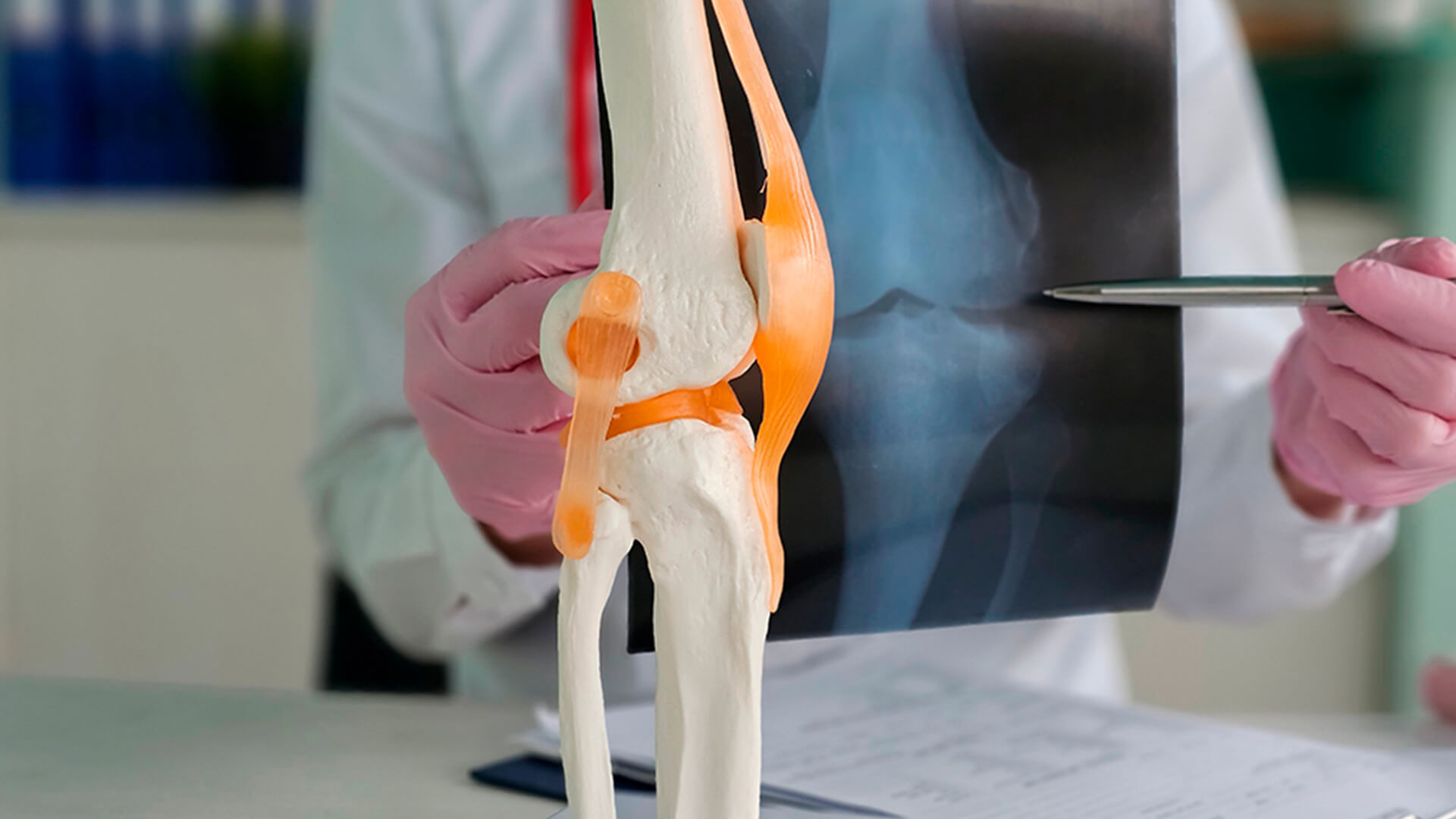An estimated 60 out of 100 thousand people suffer from a torn meniscus, but this figure is significantly higher for athletes. The symptoms tend to be underestimated, but when the injury is detected early, treatment is faster and more effective. Find out what signs to look out for and how to treat it.
What is a meniscal tear?
A meniscal tear is damage to the two C-shaped disks of cartilage in the knee, located between the femur and the tibia. Each knee has two menisci, the medial and internal, which absorb the burden on the femur and tibia, and increase the knee’s stability. Therefore, menisci play an important role in body weight distribution, shock absorption and joint stability.
Meniscal tears are particularly common in people who practise contact sports, like soccer and basketball, which involve pivots or rapid knee movements. However, these injuries can also result from direct trauma and in people of different ages and physical fitness levels, due to incorrect movements or the natural and gradual wear of the meniscus.
Meniscal tear: symptoms?
The symptoms of a meniscal tear can vary from person to person, and some injuries can be asymptomatic or appear through mild symptoms. However, the most common symptoms include:
Knee pain
Pain is the most common symptom and the intensity can vary. This can be felt outside or inside the knee, and it can be sharp or throbbing.
Inflammation
A meniscal tear can cause the knee joint to swell, resulting in an increase in the joint’s volume that can range from mild to moderate, depending on the severity of the injury.
Locked knee sensation
In some cases, part of the cartilage can dislocate, making the knee feel locked. As a result, patients can have difficulty moving their knee freely, especially when trying to fully extend the affected leg.
Popping sensation
A meniscal tear can cause painful ‘pops’, especially when the patient tries to squat. This occurs due to friction between the damaged parts of the meniscus.
Knee instability
In some cases, a meniscal tear can make the knee feel unstable, as if it could buckle.
What causes a meniscal tear?
Meniscal tears don’t only occur in athletes. People of different ages and fitness levels can suffer from a torn meniscus due to various factors and circumstances. The principal causes include:
Direct trauma
Extreme impact or knee rotation can cause a meniscal tear. Impact can occur during physical activity, an accident, fall or any other circumstance that causes knee trauma.
Ageing
Over time, the menisci are subject to natural wear. As the body ages, cartilage becomes more fragile and susceptible to injury, which means that meniscal tears can occur simply through normal knee movements, like squatting or rising from a seated position.
Sports
Recreational or professional sports that involve repetitive knee movements like frequent squats, jumps or weight lifting, can substantially increase the risk of meniscal tears.
How is a meniscal tear diagnosed?
Diagnosing a torn meniscus usually involves a combination of clinical evaluation, physical examination and imaging exams.
Clinica l evaluation
The physician will ask some questions to assess the patient’s symptoms, such as knee pain, swelling or locking, as well as possible recent traumatic events that could have caused the injury.
Physical examination
During the physical examination, the physician performs specific tests to assess the injured knee. These tests can include specific bending and rotating movements to evaluate the knee’s stability and range of motion. In addition, the physician may conduct palpation tests to identify tender areas or swelling around the knee.
Imaging exams
Magnetic resonance imaging (MRI) is the most suitable exam to diagnose a meniscal tear. Not all meniscal injuries are visible, but this exam usually enables confirmation of the diagnosis, providing detailed images of the location, type and extent of the injury.
How is a meniscal tear treated?
The treatment for a torn meniscus should be determined by the Orthopaedist based on the physician’s assessment and characteristics of the injury. The principal goal of treatment is to relieve pain, improve knee function and prevent long-term complications. The most common treatment options include:
Rest
Resting the knee is recommended, as well as avoiding activities that may aggravate the symptoms. Icing the injured knee can help reduce pain and swelling.
Medication
Pain killers and non-steroidal anti-inflammatory drugs can relieve pain and reduce swelling.
Physiotherapy
A physiotherapy exercise protocol can help strengthen muscles around the knee, improving joint stability and restoring range of motion.
Surgery
Meniscal tears with persistent pain and/or joint blockage may require surgical treatment. The surgery is performed by knee arthroscopy, a less invasive, less painful procedure that requires a shorter hospital stay. Two small incisions are made in the skin to insert a camara and the surgical tools to repair or remove the damaged portion of the meniscus. A meniscal transplant may be prescribed for patients with a completely deteriorated meniscus or youths who suffer from pain but want to keep practising sports. The patient is expected to regain autonomy for daily life after 2 to 3 months.
How to prevent a meniscal tear?
Although not all meniscal tears can be prevented, there are some measures that can help reduce the risk.
Proper warm-up and stretching
Before beginning intense physical activities, it’s important to warm up properly to prepare the muscles and joints for exercise. Walking, stretching exercises and light movements help gradually increase body temperature and blood circulation. Stretching before and after exercise is also important to maintain flexibility and reduce the risk of injury.
Correct technique during physical activities
To practise sports that involve intense or high-speed movements, it’s essential to learn to apply the right technique correctly, to minimise the extra load on your knees.
Avoid overloading and excessive impacts
Avoid overloading your knees with high-impact activities, such as long-distance running on irregular surfaces or too much jumping. Alternating between different activities and workouts can help reduce the excessive burden on joints.
Wear the right equipment
Wear sports shoes that are suitable for the type of activity performed. The right shoes with proper support can help absorb impacts and stabilise the knee.
Pay attention to your body
Look out for signs of knee fatigue, pain or discomfort. Rest when necessary and don’t ignore persistent symptoms or prior injuries. It’s important to give your body enough time to recover before resuming intense activities.
Treating meniscal tears at Joaquim Chaves Saúde
At Joaquim Chaves Saúde, you will find a team of highly specialised Orthopaedic professionals, supported by state-of-the-art technology to guarantee an accurate diagnosis and effective treatment. Schedule your appointment and benefit from the latest medical protocols to treat meniscal tears, and get your quality of life back!






